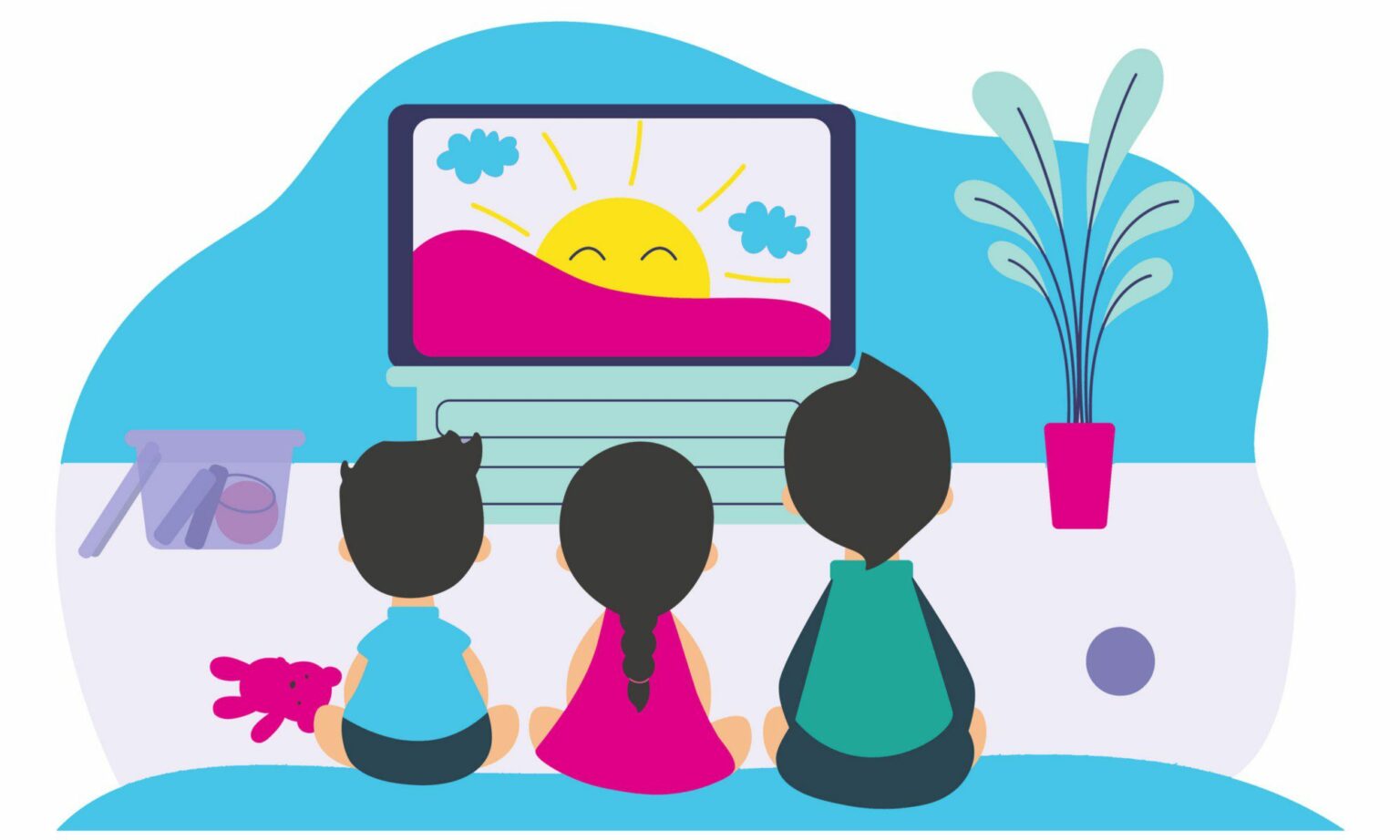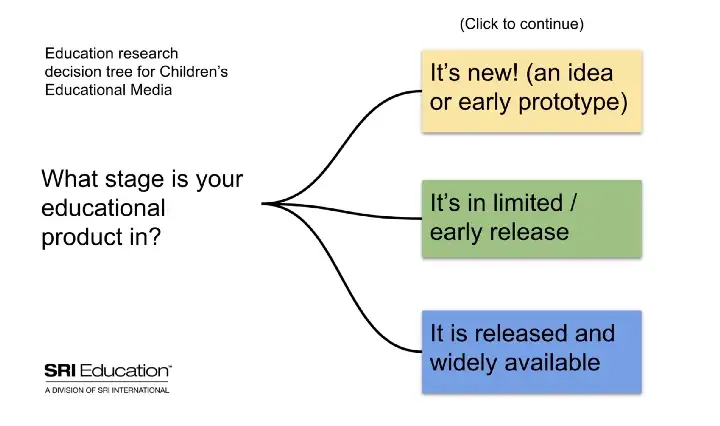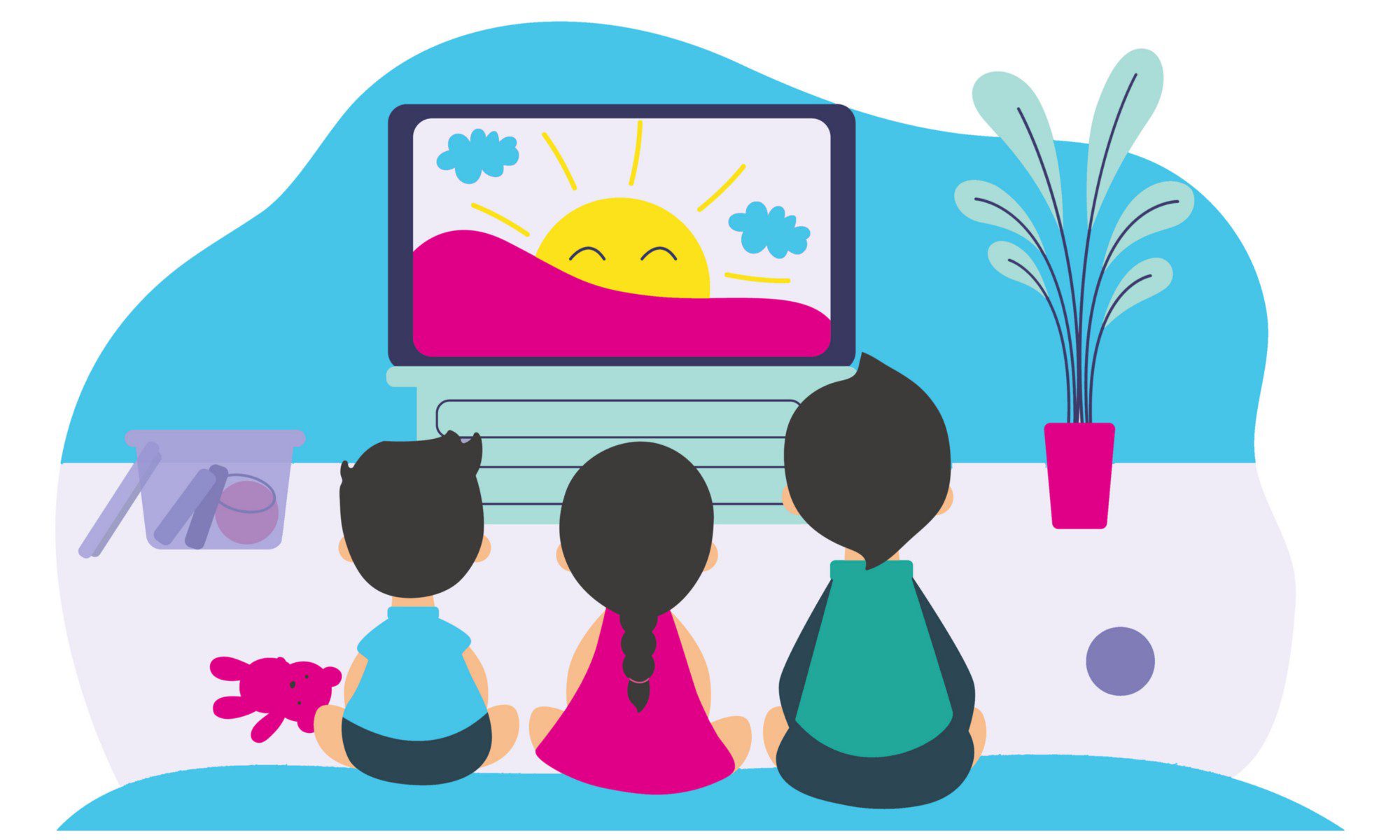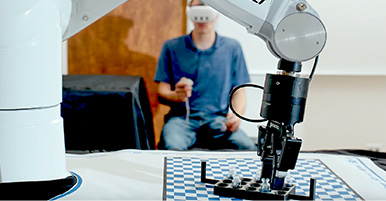
Producers and creators of children’s educational media face important questions at every stage of their product’s lifecycle, starting with the development of new product concepts to the ongoing success and growth of established products. Likewise, thoughtful parents long for reassurance that the movies, books, and apps that they provide to their children are age-appropriate and lead to time well spent; producers aim to benefit the children (impact) and grow their audience (scale).
To address these needs, education researchers at SRI International partnered with a wide variety of children’s media organizations to develop, improve, and evaluate digital media-based learning experiences for children and adolescents. The research involves a variety of tailor-made approaches, depending on the priority questions. This article peels back the curtain on education research, providing examples of the many ways that SRI Education experts work with children’s media organizations.
The interactive research decision tool below is modeled after the many ways that SRI researchers help organizations at any stage in a product’s lifecycle — helping to shape the learning experiences of children and the success of the products.

When a new children’s educational product, app, or show is under consideration, one common question asked by creators is, “We know this product is fun and educational, but how does it fit into our target market?”
SRI researchers assisted one major children’s media company that released its first TV series in a new content domain. The company wanted to understand how they could partner with informal learning spaces, such as zoos, aquariums, and museums, to publicize the series and help children make learning connections between the show and real life. SRI researchers identified potential partners that matched the company’s goals, then conducted phone interviews, in-person visits, and audience observations. SRI researchers uncovered potential barriers to the company’s initial partnership strategy, and suggested solutions and new partnership strategies based on potential partners’ greatest needs.
Because families have many options when it comes to children’s media, some media organizations come to SRI asking, “How can we make sure our product meets users’ educational needs, especially in ways that differentiate us from the crowd of media offerings?”
To address this type of question, SRI researchers work closely with children’s educational multimedia organizations to find new and better ways of understanding families’ needs and expectations. In one national survey, SRI and its research partner sought to understand parents’ perspectives and struggles in helping their children learn science. The work provided producers with important insights regarding what parents are looking for, such as ideas for science activities that don’t take much time or require many supplies.
Because media development is time consuming and expensive, early feedback can reduce wasted time and resources. Smart developers ask, “What is the best way to increase our confidence, early in the process, that what we’re developing is likely to be effective?”
SRI researchers can help organizations save money by avoiding costly mistakes and learning what works before a product is released, revealing whether the target audience will use it, like it, and learn from it in the way that was anticipated. To accomplish this, the SRI Education research team conducts user testing and formative evaluations to assess how the product is working with real families. The SRI education team can then provide insights that potentially reveal how even small changes prior to release can make a significant positive impact on the product’s success after its release.
Once a new product is released, children’s media organizations often want to scale up adoption by providing credible evidence of learning impacts. “How do we provide strong evidence that our product helps kids learn?”
This evidence shows funders that their investment is making an impact. It can also be a powerful example when applying for new funding to expand the product. Evidence of impact can boost a media product’s credibility with parents or educators, supporting greater adoption. And this kind of evidence is often critical when states and districts consider adopting a new product.
SRI can customize a summative impact evaluation study to meet your needs, whether you want descriptions of participants’ experiences over time, statistical quantification of how much children learned, or a mix of the two. SRI is experienced at designing and conducting a range of summative evaluations from simple pre-test to post-test gains to randomized controlled trials designed to meet national standards of rigorous research.
The future is wide open for new and innovative children’s educational media.
SRI International, with its legacy of innovation, combined with the learning science expertise of the SRI Education division, have a track record as collaborative co-creators. SRI works with media partners as co-creators to provide future-forward ideas, subject matter expertise, and the ability to gather credible evidence of the curriculum’s effectiveness. SRI Education can provide a blueprint for designing activities as well as feedback and guidance on making technology and the non-technology activities more effective.
Children’s educational media holds great promise for benefitting children in schools, homes, and communities. Through a close collaboration between creators and education researchers, we are many steps closer to achieving the promise of reach and impact — for ALL children.
Authors: Claire Christensen, Ph.D. (SRI Education) in collaboration with Jim Vanides, M.Ed. (Senior Education & Industry Consultant)



